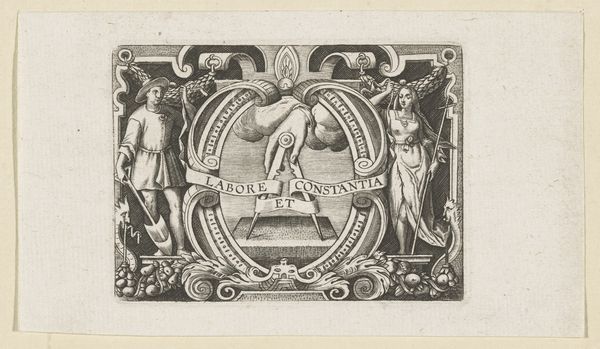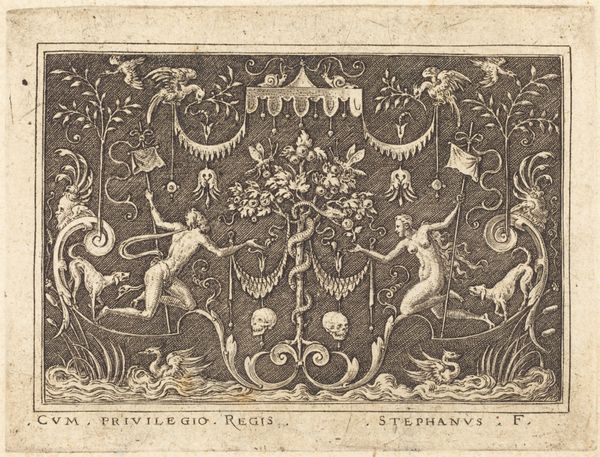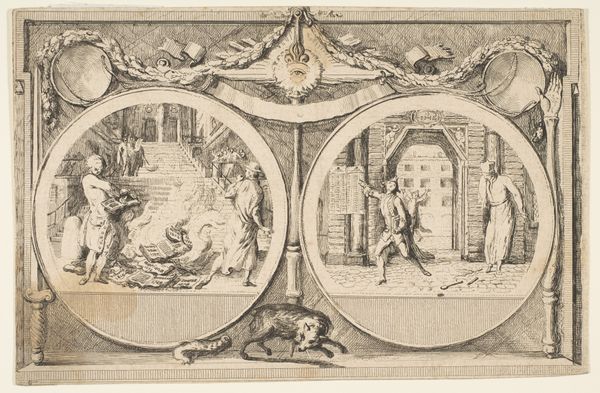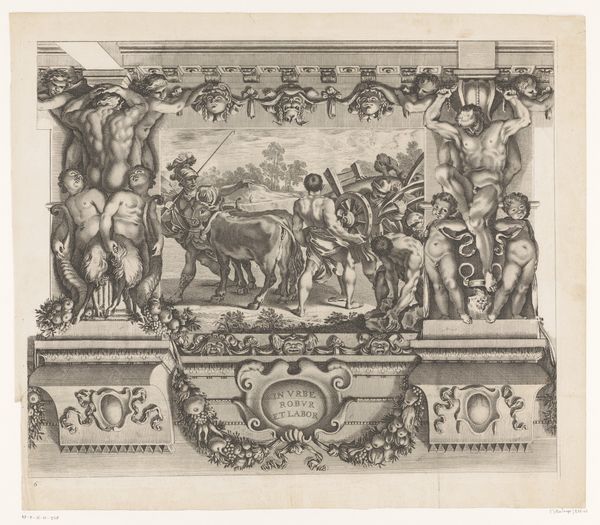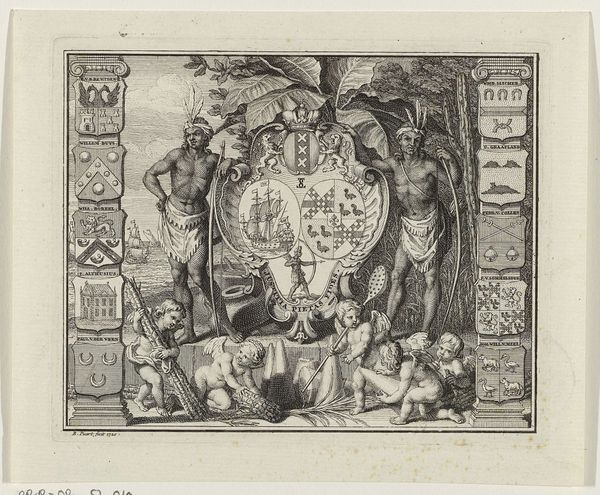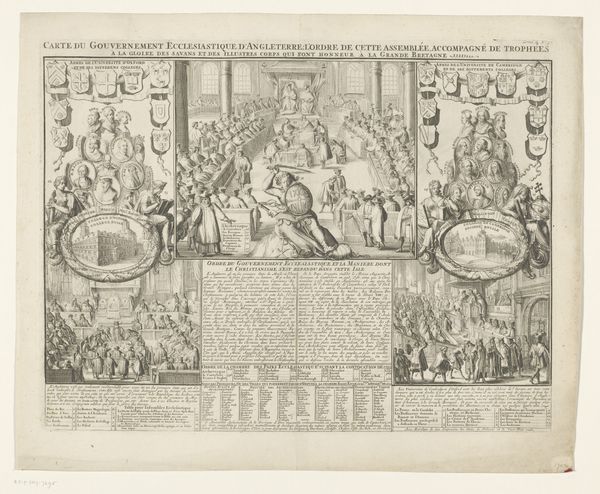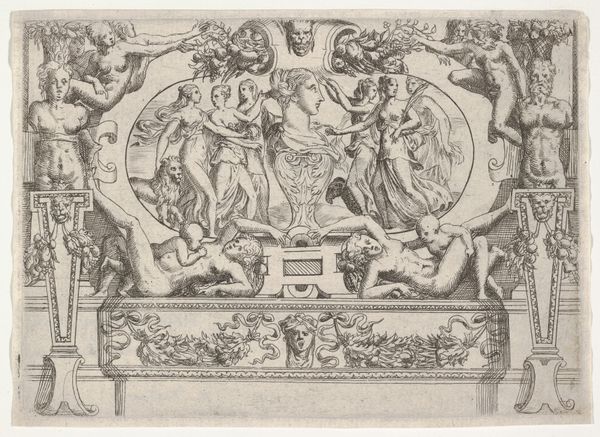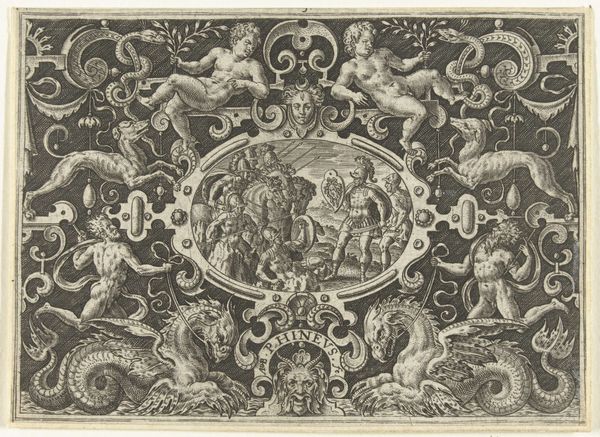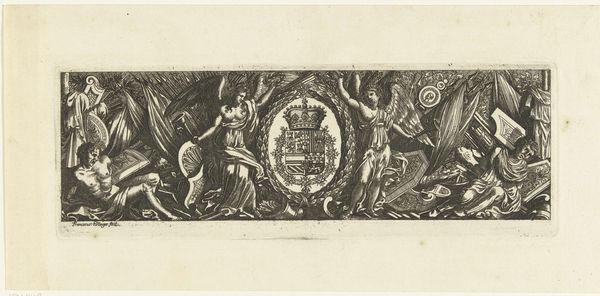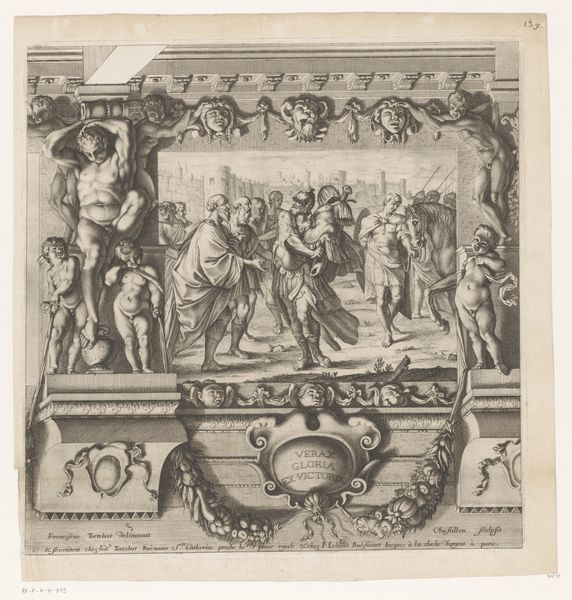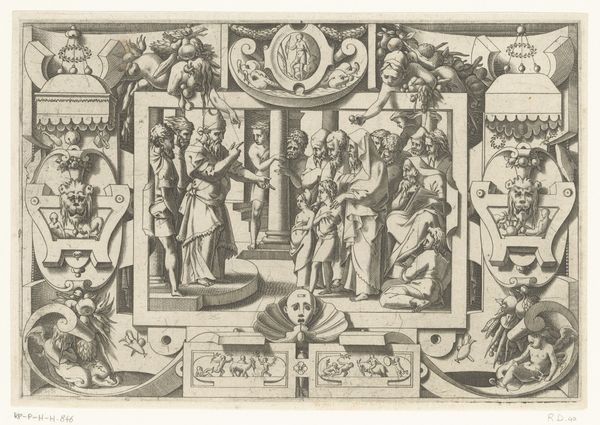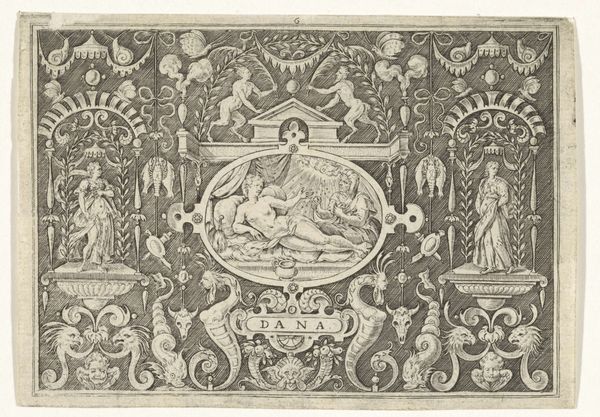
print, engraving
#
pen drawing
# print
#
figuration
#
11_renaissance
#
line
#
history-painting
#
northern-renaissance
#
engraving
Copyright: National Gallery of Art: CC0 1.0
Editor: We’re looking at "Sacrifice of Abraham" by Etienne Delaune. It's an engraving, probably from the Renaissance. The detail is incredible, especially considering its size. There's this tension between the classical imagery and this darker subject matter that I find fascinating. How do you interpret this work, particularly within its historical context? Curator: The print is so loaded. Beyond its literal biblical representation, consider its production and dissemination. Prints like this circulated widely in the 16th century. What role did they play in shaping public understanding – and perhaps acceptance – of religious doctrine and authority? Editor: So, you're saying that it’s more than just religious instruction? Curator: Precisely. Look at the ornamental framework – the grotesque figures, the classical motifs. Doesn't it signal the patron’s, or perhaps the artist's, access to and command of elite cultural knowledge? Isn't it about conveying status through imagery as much as communicating faith? And how does that dynamic shift the power of the image? Editor: That’s a perspective I hadn't fully considered. It makes you wonder who the intended audience was, beyond just the religiously devout. It sounds like prints were quite strategic in those days. Curator: Indeed. And strategically powerful. Consider the "privilegio regis" printed at the bottom – the royal privilege. This wasn’t just art; it was authorized imagery. Editor: Wow. Seeing it as a tool of authorized messaging really opens it up. It's more than just a religious scene; it's a statement about power, knowledge, and the role of art in shaping societal beliefs. Thanks for sharing your insights! Curator: My pleasure! Analyzing art’s historical context offers new ways of considering imagery.
Comments
No comments
Be the first to comment and join the conversation on the ultimate creative platform.


